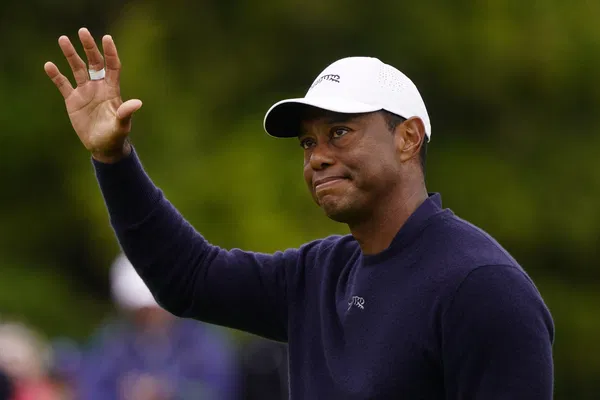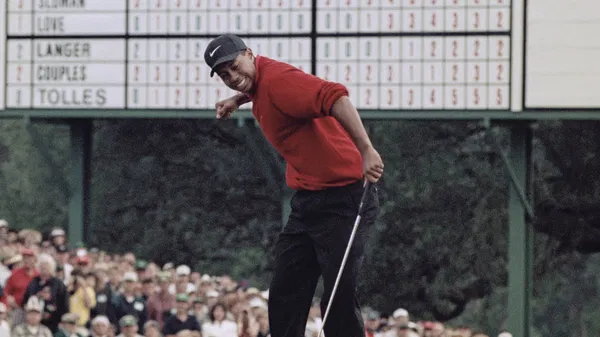
Tiger Woods’ dominance in golf can be attributed largely to his mindset—he focused on beating the field rather than chasing records. This strategic approach set him and Jack Nicklaus apart from modern stars like Scottie Scheffler, Rory McIlroy, and Vijay Singh. While both Woods and Nicklaus were capable of breaking numerous records, their primary aim during competition was simply to win—and to win convincingly.
A new PGA Tour documentary titled ‘Tiger Woods’ BEST season in golf: The full story’ explores this mindset and showcases the level of dominance Woods displayed, especially during the 2000 season. According to the film, Woods secured six wins by margins of eight strokes or more, one of which was his legendary 1997 Masters victory. More notably, he shot a 12-under-par 272 in the 2000 U.S. Open, finishing 15 strokes ahead of the field. He followed that with an 8-stroke win at The Open Championship just over a month later. These victories were part of a historic run that culminated in the Tiger Slam—winning all four major championships consecutively—by April 2001. Woods remains the only golfer to have held all four majors at once.
The documentary features testimonials from other golfers who played alongside Woods, highlighting the intimidation and awe they felt. David Toms, who tied for fourth in the 2000 Open Championship, praised Woods’ exceptional control with long irons. Toms explained that where 25-30 feet from the hole was a good shot for most players, Woods consistently landed the ball within five or six feet. That season, Woods hit 75.15% of greens in regulation and had a scoring average of 67.794—far superior to Scottie Scheffler’s 2024 average of 68.645. He also led scoring averages across par-3s, par-4s, and par-5s, a testament to his all-around superiority.
In the same tournament, rookie Adam Scott shared an anecdote about trying to emulate Woods by using a 4-iron on a par-3 after seeing Woods do it. However, Scott overshot the green, revealing how deceptive Woods’ power and precision could be. Although they weren’t in the same group, Woods’ influence on Scott, who was playing in his first major, was profound.

Fred Couples, who finished sixth at that Open Championship, remarked on Woods’ undeniable dominance. He said that the best strategy at times was simply to let Woods win, acknowledging that trying to outplay him was often futile. However, not everyone took that approach. Phil Mickelson, for example, chose to challenge Woods and found significant success, winning 21 PGA Tour titles during Woods’ prime years from 2000 to 2008.
Lee Janzen, another veteran, spoke about how demoralizing it was to compete against Woods. Even as someone who had faced Jack Nicklaus and Arnold Palmer, Janzen admitted that Woods’ play was disheartening, causing him to lose the will to compete. He missed the cut at that Open Championship after finishing three over par through two rounds.
Woods’ dominance at St. Andrews in 2000 is considered a defining example of his greatness. But his legacy didn’t end with his prime. In 2019, he won his 15th major title at the Masters Tournament after an 11-year gap. Entering the tournament following a T5 finish at the WGC-Dell Technologies Match Play, Woods began the Masters in 10th place. Over the next three rounds, he steadily climbed the leaderboard.
In the final round, Woods shot a 2-under-par 70 to win by one stroke over Xander Schauffele, Brooks Koepka, and Dustin Johnson. Despite no longer being as physically dominant as he once was, Woods maintained incredible consistency and composure. He recorded the second-most birdies of the tournament and secured his fifth Green Jacket. His win was a testament to not only his skill but his enduring mental strength.
The article ultimately asks whether today’s golfers can ever replicate Woods’ dominance, highlighting the extraordinary mix of talent, focus, and willpower that defined his career.